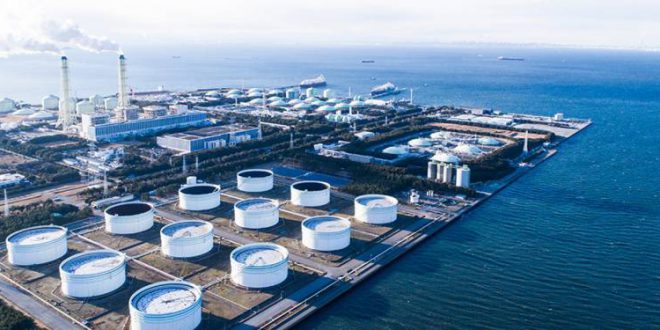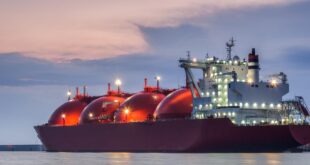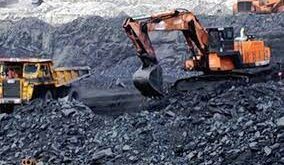Japan. known for its aversion to using oil for power generation. has had little choice but to ramp up its usage of the dirtier burning hydrocarbon amid a deadly heatwave hitting the country.
The Japan Meteorological Agency (JMA) declared the heatwave in the country a natural disaster on Tuesday. The same day. the city of Kumagaya reported a temperature of 106F degrees (41.1C). the highest ever recorded in Japan. Temperatures also reached more than 104F for the first time in the Tokyo metropolitan region.
The JMA has indicated that temperatures could remain into August. typically the hottest month of the year for the country. Western Japan has a 50 percent chance of experiencing above-average temperatures over the month. according to the JMA.
Global head wave
The same heatwave has been hitting most of the Northern Hemisphere. ranging from the Arctic Circle. to northern Europe. the state of California and parts of North Africa with corresponding drought. death and destruction. Climatologists are claiming that global warming is to blame for the record high temperatures.
“2018 is shaping up to be one of the hottest years on record. with new temperature records in many countries.“ said Elena Manaenkova. deputy secretary-general of the World Meteorological Organization (WMO).
“This is no surprise.“ she added. “The heat waves and extreme heat we are experiencing are consistent with what we expect as a result of climate change. caused by greenhouse gas emissions.“
“This is not a future scenario. It is happening now.“
Temperatures in some parts of the Arctic Circle hit a sweltering 86F degrees last week. while temperatures in Russia’s Siberia hit 99F degrees. Southern California. near San Diego. were expected to have temperatures range between 90F to 95F degrees in the western valleys with temperatures from 95F to 102F in the inland valleys.
Japan’s quandary
Japan’s quandary of having to turn to older power generating units that burn oil would have been unlikely just a few years ago. Before the Fukushima nuclear disaster in April 2011. Japan operated around 50 nuclear power plants to generate electrical power. comprising about a third of the country’s power generation. After the earthquake. tsunami and ensuing nuclear meltdown at the Fukushima plant. Japan eventually shut down all of its nuclear reactors. In the past seven years. only six reactors have become operational again amid upgrades and ongoing safety concerns.
Kansai Electric Power. which supplies Japan’s western industrialized heartland where the heatwave has been most persistent. has started up two old oil-fired units. with total capacity of 1.2 gigawatts (GW). according to a Reuters report.
Tokyo Electric Power. Japan’s largest electricity provider and the operator of the now defunct Fukushima nuclear plant. has run oil. coal and gas plants at rates higher than their typical maximum capacity. the same Reuters report said. citing a company spokesman.
Impact on LNG
Since Japan is the largest global buyer of liquefied natural gas (LNG) and mostly uses it for power generation. increased air conditioning usage due to the heatwave has also put upward pressure on LNG spot prices in the Asia-Pacific region. which accounts for 72 percent of all global demand.
Spot prices for September LNG-AS delivery in Asia were assessed at $9.75 MMBtu. up 25 cents from the previous week. Price increases will likely remain until the heatwave subsides.
China. the world’s second largest LNG importer. has also suffered from the ongoing heatwave. Beijing recorded the highest temperature in the first few days of July in 50 years. with an average temperature of 105F degrees.
China imported 23.81 million tonnes of LNG in the first half of 2018. up by 50 percent from a year ago. and 18.26 million tonnes of pipeline gas. up by 20.2 percent. The value of China’s LNG imports was up by 84.3 percent. to $10.9 billion. while the value of piped imports increased by 36.5 percent. to $5.63 billion.
The heatwave has also hit South Korea. the world’s third largest global LNG importer. likewise increasing gas demand. For the first half of 2018. the country’s imports of the super-cooled fuel spiked 16 percent to a record 22.7 million tonnes. according to customs data.
Much of that demand increase also came as about half of the country’s 24 nuclear power plants were shut down for maintenance. All but six of those reactors will come back online. which will cause South Korean LNG demand to decline. Demand will also be offset by the start-up of the 950-megawatt Hanul No.2 nuclear reactor. which was expected to be fully operational by Sunday.
 Iran Energy News Oil, Gas, Petrochemical and Energy Field Specialized Channel
Iran Energy News Oil, Gas, Petrochemical and Energy Field Specialized Channel




